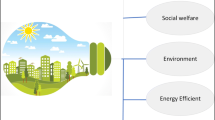Abstract
This paper is devoted to the development of tools that allow museum workers to create interactive exhibits by using the Internet of Things (IoT) technology. We propose a unified software and hardware solution that enables the users who do not have deep knowledge in electronics and programming to assemble and interconnect various devices by the principle of a construction set. This, in turn, makes it possible to implement the concept of Smart Museum without the involvement of third-party IT specialists and large investments. The hardware part of the proposed solution is based on the ESP8266 programmable microcontroller with a built-in WiFi module. Peripheral devices can be connected to this microcontroller via expansion boards, the so-called shields. The software part of the solution is based on the SciVi adaptive multiplatform scientific visualization system. This system is fully controlled by the ontological knowledge base and provides the user with a high-level graphical interface that allows him or her to describe visualization algorithms by using data flow diagrams (DFDs). In this work, the SciVi system is supplemented with a mechanism that automatically generates firmware for IoT devices. It is based on an electronic component ontology that describes these devices and their programming methods. The firmware code generator controlled by this ontology automates the creation of lightweight embedded SciVi copies, which are installed on IoT devices and act as servers for data collection, processing, and visualization. To test the proposed solution, we created an interactive exhibit of Dimetrodon grandis, an extinct species of synapsids that lived during the Early Permian.




Similar content being viewed by others
Notes
REFERENCES
Rose, K., Eldridge, S., and Chapin, L., The Internet of Things: An overview, 2015. http://www.internetsociety.org/resources/doc/2015/iot-overview.
Kale, N. and Itkarkar, R., Smart museum based on IoT, Int. J. Innovations Adv. Comput. Sci., 2017, vol. 6, no. 8, pp. 241–247.
Chianese, A. and Piccialli, F., Designing a smart museum: When cultural heritage joins IoT, Proc. 3rd Int. Conf. Technologies and Applications for Smart Cities (I-TASC), 2014. https://doi.org/10.1109/NGMAST.2014.21
Alletto, S., Cucchiara, R., Del Fiore, G., Mainetti, L., Mighali, V., Patrono, L., and Serra, G., An indoor location-aware system for an IoT-based smart museum, IEEE Internet Things J., 2016, vol. 3, no. 2, pp. 244–253. https://doi.org/10.1109/JIOT.2015.2506258
Ryabinin, K. and Chuprina, S., Development of ontology-based multiplatform adaptive scientific visualization system, J. Comput. Sci., 2015, vol. 10, pp. 370–381. https://doi.org/10.1016/j.jocs.2015.03.003
Bock, C., Fokoue, A., Haase, P., Hoekstra, R., Horrocks, I., Ruttenberg, A., Sattler, U., and Smith, M., OWL 2 web ontology language structural specification and functional-style syntax, 2nd ed., 2012. https://www.w3.org/TR/owl2-syntax.
Chuprina, S. and Nasraoui, O., Using ontology-based adaptable scientific visualization and cognitive graphics tools to transform traditional information systems into intelligent systems, Sci. Visualization, 2016, vol. 8, no. 1, pp. 23–44.
Lee, B. and Hurson, A.R., Issues in dataflow computing, Adv. Comput., 1993, vol. 37, pp. 285–333. https://doi.org/10.1016/S0065-2458(08)60407-6
Ryabinin, K., Chuprina, S., and Kolesnik, M., Calibration and monitoring of IoT devices by means of embedded scientific visualization tools, Lect. Notes Comput. Sci., 2018, vol. 10861, pp. 655–668. https://doi.org/10.1007/978-3-319-93701-4_52
Blom, J., Arduino shields. https://learn.sparkfun.com/tutorials/arduino-shields.
Bakker, R.T., Dinosaur Renaissance, Scientific American, 1975, pp. 58–78.
Witton, M.P., Naish, D., and Conway, J., State of the palaeoart, Palaeontologia Electron., 2014, vol. 17, no. 3.
Hartman, S., Taking a 21st century look at Dimetrodon Scott Hartman’s skeletal drawing, 2016. http://www.skeletaldrawing.com/home/21stcenturydimetrodon.
Conway, J., Kosemen, C.M., and Naish, D., All Yesterdays: Unique and Speculative Views of Dinosaurs and Other Prehistoric Animals, Irregular Books, 2012.
Ryabinin, K.V. and Chuprina, S.I., Using scientific visualization systems to automate monitoring of data generated by lightweight programmable electronic devices, Program. Comput. Software, 2018, vol. 44, no. 4, pp. 278–285. https://doi.org/10.1134/S0361768818040102
Author information
Authors and Affiliations
Corresponding authors
Additional information
Translated by Yu. Kornienko
Rights and permissions
About this article
Cite this article
Ryabinin, K.V., Kolesnik, M.A. Adaptive Scientific Visualization Tools for a Smart Paleontological Museum. Program Comput Soft 45, 180–186 (2019). https://doi.org/10.1134/S0361768819040066
Received:
Revised:
Accepted:
Published:
Issue Date:
DOI: https://doi.org/10.1134/S0361768819040066




